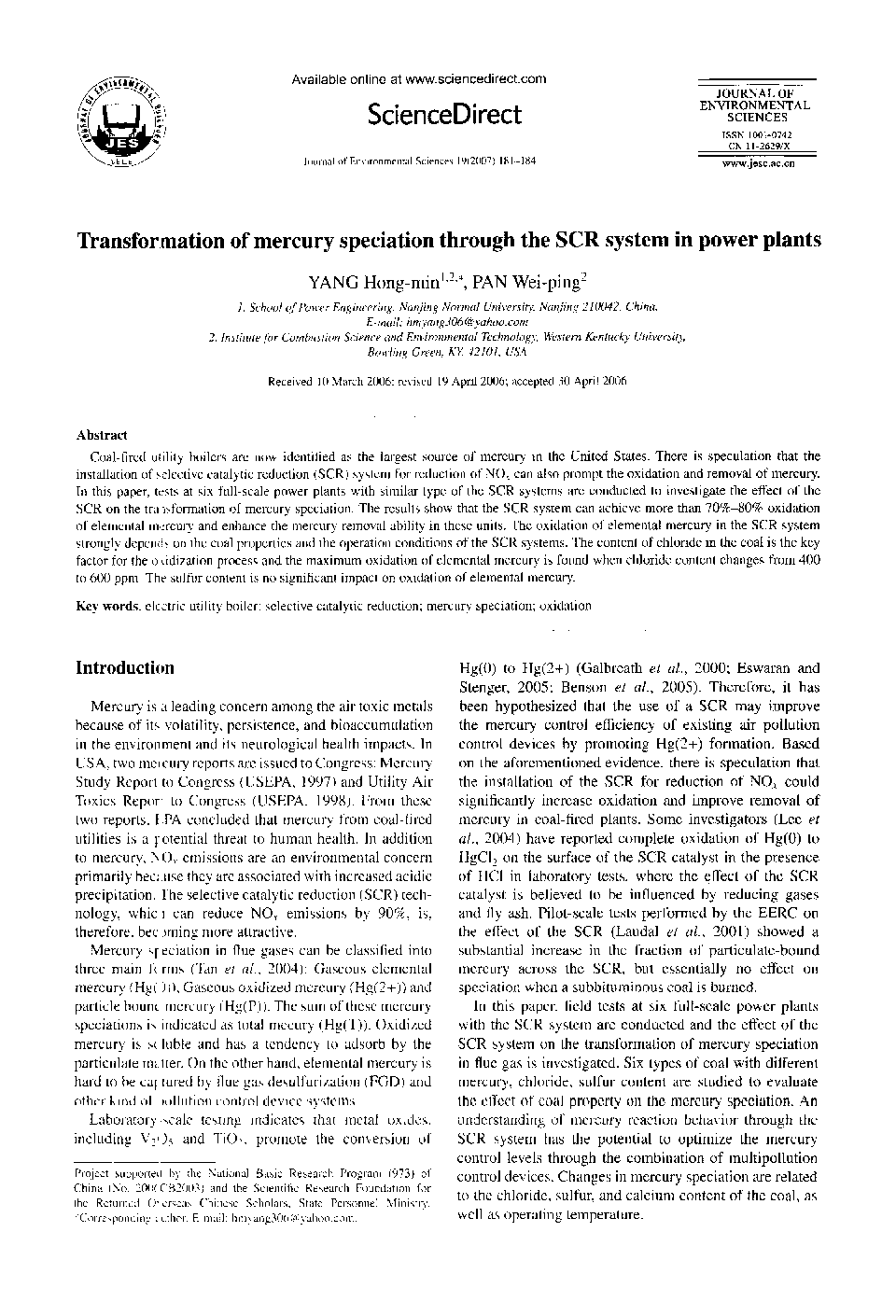| Article ID | Journal | Published Year | Pages | File Type |
|---|---|---|---|---|
| 4456772 | Journal of Environmental Sciences | 2007 | 4 Pages |
Coal-fired utility boilers are now identified as the largest source of mercury in the United States. There is speculation that the installation of selective catalytic reduction (SCR) system for reduction of NOx can also prompt the oxidation and removal of mercury. In this paper, tests at six full-scale power plants with similar type of the SCR systems are conducted to investigate the effect of the SCR on the transformation of mercury speciation. The results show that the SCR system can achieve more than 70%-80% oxidation of elemental mercury and enhance the mercury removal ability in these units. The oxidation of elemental mercury in the SCR system strongly depends on the coal properties and the operation conditions of the SCR systems. The content of chloride in the coal is the key factor for the oxidization process and the maximum oxidation of elemental mercury is found when chloride content changes from 400 to 600 ppm. The sulfur content is no significant impact on oxidation of elemental mercury.
